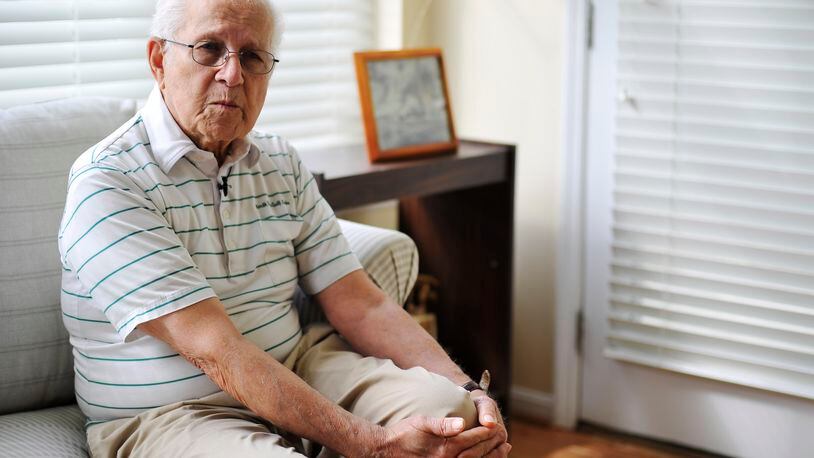He sat down with his mother in their kitchen in Providence, R.I., and broke the news: “I’m enlisting in the Navy.”
Sarah Seales wanted no part of the dangers associated with the military for her son, her only child. She told him no.
“‘I’m going to do it anyway,’” the 19-year-old told his mother.
MORE: Middletown man’s historic flag to fly at Air Force Museum
He enlisted a few weeks after Pearl Harbor, Dec. 7, 1941, and served in the Navy for five years, mostly on the USS Philip, a destroyer. He certainly never expected to be alive to commemorate the 75th anniversary of the tragic events that pushed the U.S. into World War II.
Not long after sunrise, Japanese fighter planes hit the facilities, 18 of the 92 ships in port were sunk or heavily damaged, 188 airplanes destroyed, and 2,403 military personnel and civilians killed.
An additional 1,143 servicemen and 35 civilians were wounded.
That was 75 years ago today.
The next day, President Franklin D. Roosevelt declared Dec. 7 “a date which will live in infamy.” He asked and received a declaration of war from Congress.
WWII, of course, changed the course of this country. Cities were destroyed, millions were killed and the war encompassed nearly everyone — young men who signed up to go off and fight, the women who learned to build military weapons, and the children who gathered scrap metal for the building of tanks and planes and bombs.
An estimated 60,000 service members survived Pearl Harbor. In the 75 years since, their numbers have decreased steadily as old age has managed to do what Japanese fighter planes could not. No one is sure how many servicemen are living. Two years ago, an estimated 2,000 to 2,500 were thought to be alive.
Seales, 94, said of the more than 300 servicemen on USS Philip during WWII, there are thought to be a handful alive. He said those on the destroyers were called “tin can sailors,” and were charged with escorting ships in the ocean. He said the crew on destroyers numbered about 300, or 700 less than a ship.
“We were expendable,” he said.
After the war, Seales learned that five brothers of the Sullivan family were killed when light cruiser USS Juneau was struck by a Japanese submarine on Nov. 13, 1942 during the Naval Battle of Guadalcanal. Nearly 700 men were killed.
He called that his most vivid memory of the war.
Seales grew up in Rhode Island, New Jersey and New York before moving to Butler County in the mid-1980s to be closer to his daughter, grandchildren and great-grandchildren. He lived in Fairfield Twp., and now lives in Mason.
All of his photographs from the war were lost by the moving company when Seales relocated to Ohio, he said. He was reimbursed for the lost items, but no amount of money could replace the memories, he said.
“That was some war,” he said. “Changed all of us forever.”
Another local WW II veteran, Llano Bell, 90, a member of the VFW Post 7696 in West Chester Twp., said he enlisted in the Navy because he felt that was the safest branch of the military.
“Kept me out of the trenches,” he said.
He was asked whether it feels like Pearl Harbor happened 75 years ago.
“No,” he said. “Time passes by so fast it doesn’t seem like that.”
Middletown's highly decorated World War II veteran, Bill Wilch, 92, died Monday, two days before the 75th anniversary of Pearl Harbor, after a long illness, his son, Steve, said. It would have been ironic had his father died on the 75th anniversary of Pearl Harbor, he said.
When asked about the war, Bill Wilch, who received the Purple Heart Medal, Bronze Star Medal, and the Knight of the Legion of Honor medal, often said: “The Navy guys saved our butts.”
When Steve Wilch questioned his father about Pearl Harbor, he told him: “That’s what started the war I was in.”
Staff Writer Mark Davis contributed to this report.
About the Author
